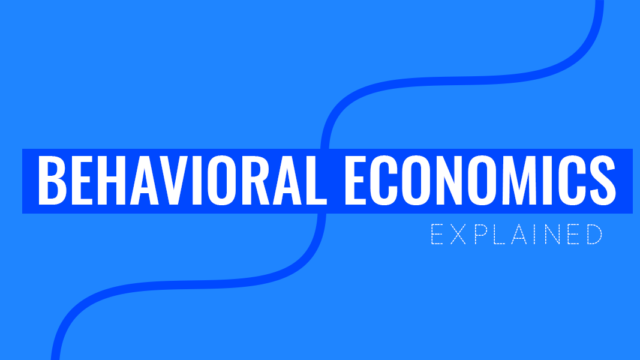
Introduction to Behavioral Economics in Insurance
For those unaware, behavioral economics is a fascinating field that studies how psychological, cognitive, and social factors play a role on decision-making processes of individuals and institutions.
Understanding the basics of behavioral economics
These findings are not isolated to mere academic discussions but vital tools for industries like insurance.
The impact of behavioral economics on insurance industry
Behavioral economics provides insurers with valuable insights into how clients perceive risk, value products, and make coverage decisions thereby influencing underwriting processes, product development and pricing strategies. Unquestionably, behavioral economics is transforming the insurance industry’s landscape and will continue to do so in foreseeable future.
Behavioral Economics in Insurance Pricing
When it comes to the insurance industry, behavioral economics plays an increasingly critical role – particularly in insurance pricing and risk assessment.
How behavioral economics affects insurance pricing
By examining the cognitive biases and systematic quirks in decision-making, insurers use behavioral economics to predict customer behavior and thereby set insurance premiums accordingly.
The role of behavioral economics in risk assessment
Moreover, this field allows insurance organizations to sensitize their risk assessment processes. Through this, insurers minimize mispricing and encourage risk-adjusted behavior among policyholders.
Behavioral Economics and Consumer Decision Making
In understanding the changing landscape of the insurance industry, one cannot ignore the inherent effects of behavioral economics.
Behavioral economics principles influencing consumer decision making in insurance
Behavioral economics principles such as loss aversion and anchoring are increasingly influencing how consumers make insurance-related decisions. These principles often determine whether a customer sees an insurance policy as desirable or not.
The psychology behind insurance purchasing decisions
Understanding the psychology behind insurance purchasing is critical in developing lucrative strategies. Realizing that people are often driven by emotions rather than pure financial calculation enables insurers to frame their policies in ways that tap into consumers’ feelings and biases.
Behavioral Economics and Claims Management
As the insurance industry explores innovative ways to deal with claims management, the adoption of behavioral economics has come to play a pivotal role.
Utilizing behavioral economics to improve claims management
Behavioral economics, a blend of psychology and economy, can assist in refining claims management processes. This approach enables insurers to predict their customers’ behaviors facilitating decisions that may trigger improved claim outcomes and adoqing customer satisfaction.
The role of behavioral economics in fraud detection and prevention
In preventing fraud, behavioral economics offers distinct advantages. It allows insurers to understand underlying motivations and patterns behind fraudulent behaviors, promoting the development of targeted anti-fraud strategies.
Behavioral Economics and Customer Engagement
How behavioral economics strategies enhance customer engagement in insurance
In the insurance industry, customer engagement is crucial for success. By applying behavioral economics principles, insurance companies can better understand customer behavior and tailor their strategies accordingly. For example, offering simplified and personalized insurance products can increase customer engagement and make the insurance experience more enjoyable. Additionally, using behavioral nudges, such as providing rewards for healthy behaviors or reminding customers of the importance of insurance, can further engage policyholders and improve their overall experience.
Using behavioral economics to improve customer satisfaction and retention
Behavioral economics can also help insurance companies enhance customer satisfaction and retention. By identifying and addressing customer pain points, insurance providers can improve the claims process, simplify policy management, and provide better customer service. Furthermore, leveraging behavioral biases, like the endowment effect or loss aversion, can be used to incentivize policyholders to renew their policies and maintain a long-term relationship with the company. Overall, applying behavioral economics strategies allows insurance companies to better meet customer needs, increase satisfaction, and retain valuable policyholders.

Implications and Challenges of Behavioral Economics in Insurance
The potential benefits and drawbacks of implementing behavioral economics
The emergence of behavioral economics has brought significant implications for the insurance industry. By understanding how individuals make decisions and behave, insurers can design policies and incentives that encourage desired behaviors and mitigate risks. This can lead to improved customer satisfaction, increased policyholder engagement, and better risk management. However, there are also potential drawbacks, such as ethical concerns and the risk of manipulation if behavioral techniques are used irresponsibly.
Addressing the challenges of integrating behavioral economics into insurance practices
Integrating behavioral economics into insurance practices is not without its challenges. Insurers need to invest in research and data analysis to gain insights into customer behavior. They also need to ensure transparency and avoid excessive paternalism when using behavioral interventions. Additionally, there may be resistance from customers who feel uncomfortable with insurers using behavioral techniques to influence their decisions. Overcoming these challenges requires careful planning, clear communication, and a focus on the long-term benefits for both insurers and policy
Case Studies: Real-World Applications of Behavioral Economics in Insurance
Examining successful case studies of behavioral economics implementation
Behavioral economics has been making waves in the insurance industry, revolutionizing the way policies are designed and sold. Several successful case studies demonstrate the impact of applying behavioral insights. For example, leveraging the concept of “nudging,” insurers have introduced personalized digital reminders for policyholders, resulting in increased renewal rates. Additionally, the use of simplified language and transparent pricing has improved customer comprehension and trust in insurance products. These case studies highlight the power of behavioral economics in shaping consumer behavior and promoting better decision-making in insurance.
Learning from practical examples in the insurance industry
To incorporate behavioral economics into your insurance business, it is crucial to learn from practical examples. One notable case study involved framing health insurance options in a way that emphasized loss aversion, prompting individuals to make choices that better protected their financial well-being. Another example is the implementation of default options for retirement savings, which significantly increased participation and contribution rates. By understanding these real-world applications, insurance companies can better engage with customers, improve decision outcomes, and foster long-term relationships. Behavioral economics provides a fresh perspective on driving positive change in the insurance industry, benefiting both insurers and policyholders alike.
Future Trends and Outlook
Emerging trends in behavioral economics and insurance
The intersection of behavioral economics and the insurance industry is creating exciting new trends. Insurers are now incorporating insights from behavioral economics to better understand customer behavior and design more effective insurance products. For example, personalized messaging and incentives are being used to encourage healthier behaviors and reduce risks. Additionally, technology, such as wearable devices, is being utilized to collect and analyze data on customer behavior, allowing insurers to tailor coverage and pricing to individual needs.
Predictions for the future of behavioral economics in the insurance sector
The future of behavioral economics in the insurance sector looks promising. As technology advances, insurers will have access to even more granular data on customer behavior, enabling them to develop increasingly personalized insurance solutions. Artificial intelligence and machine learning will play a significant role in analyzing this data and identifying patterns and correlations. This will result in more accurate risk assessments, enhanced customer experiences, and ultimately, more cost-effective insurance products. The integration of behavioral economics principles will continue to shape the insurance industry, creating a win-win situation for both insurers and customers.
Conclusion
In conclusion, behavioral economics has significantly impacted the insurance industry, offering new insights and opportunities for insurers to better understand and serve their customers. By incorporating behavioral science principles into their strategies, insurers can create more effective policies, improve customer engagement, and mitigate risk. The key is to leverage the biases and heuristics that influence consumer decision-making to design products and services that align with their needs and preferences. As the field of behavioral economics continues to evolve, its transformative power in the insurance industry is expected to grow, revolutionizing the way insurance is practiced and perceived.
Summary of the impact of behavioral economics on insurance
- Behavioral economics has highlighted the cognitive biases and heuristics that influence consumer decision-making in insurance.
- Insurers are using these insights to create personalized policies, encourage better risk management behaviors, and reduce moral hazard.
- Behavioral interventions such as framing, default options, and social norms have been effective in increasing insurance uptake and improving customer engagement.
- The use of nudges and incentives can incentivize healthier behaviors, leading to reduced insurance claims and increased customer satisfaction.
Final thoughts on the transformative power of behavioral economics
Behavioral economics has reshaped the insurance landscape, offering a fresh approach to understanding consumer behavior and enhancing customer-centricity. By acknowledging the complexities of decision-making, insurers can adapt their practices, products, and communication strategies to better serve their customers’ needs. The integration of behavioral economics principles can improve insurance outcomes for both insurers and policyholders, leading to more informed decisions, increased trust, and a more resilient and equitable insurance industry. As more research and experimentation occur in this field, the transformative potential of behavioral economics in insurance is only expected to grow.


